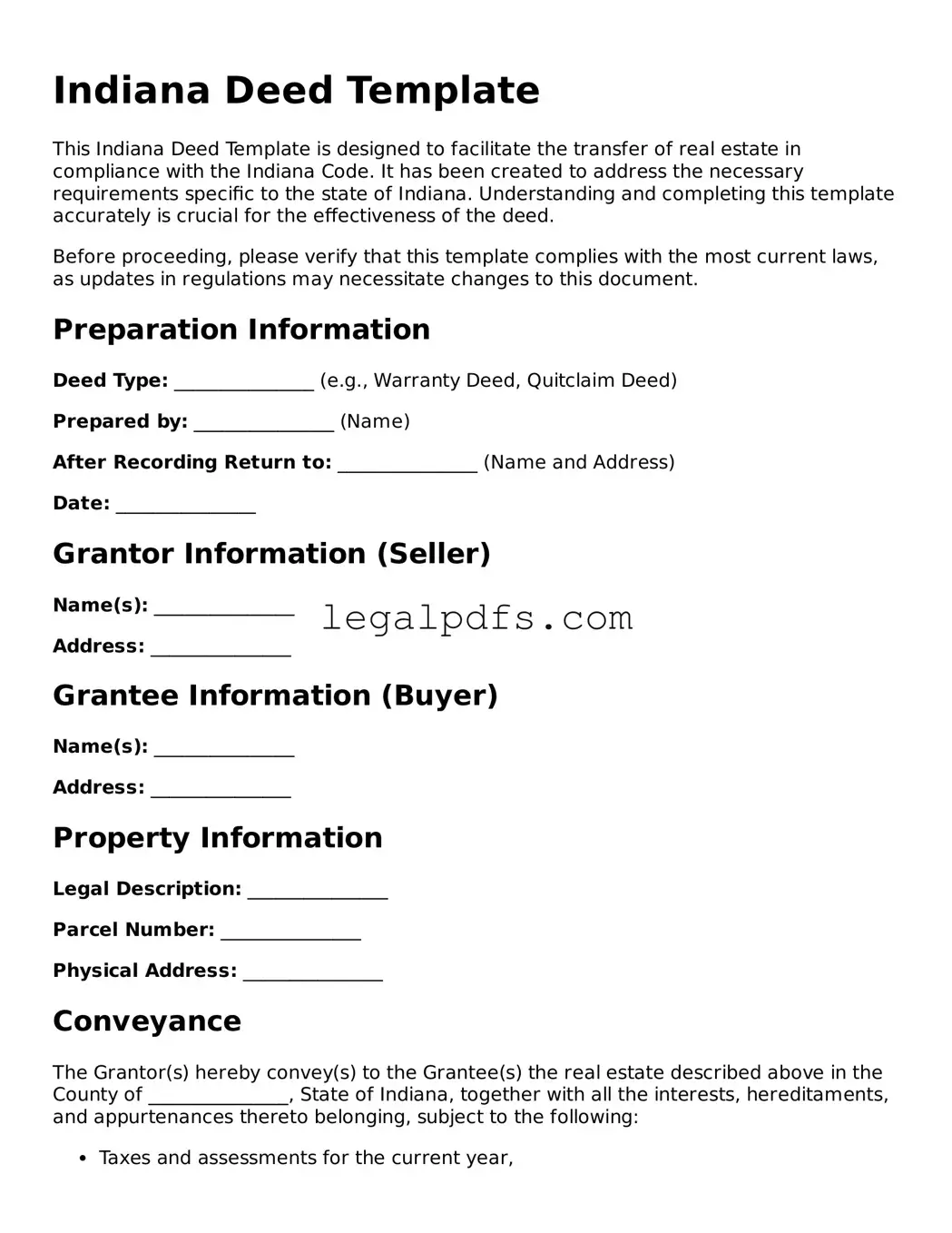Indiana Deed Template
This Indiana Deed Template is designed to facilitate the transfer of real estate in compliance with the Indiana Code. It has been created to address the necessary requirements specific to the state of Indiana. Understanding and completing this template accurately is crucial for the effectiveness of the deed.
Before proceeding, please verify that this template complies with the most current laws, as updates in regulations may necessitate changes to this document.
Preparation Information
Deed Type: _______________ (e.g., Warranty Deed, Quitclaim Deed)
Prepared by: _______________ (Name)
After Recording Return to: _______________ (Name and Address)
Date: _______________
Grantor Information (Seller)
Name(s): _______________
Address: _______________
Grantee Information (Buyer)
Name(s): _______________
Address: _______________
Property Information
Legal Description: _______________
Parcel Number: _______________
Physical Address: _______________
Conveyance
The Grantor(s) hereby convey(s) to the Grantee(s) the real estate described above in the County of _______________, State of Indiana, together with all the interests, hereditaments, and appurtenances thereto belonging, subject to the following:
- Taxes and assessments for the current year,
- Zoning ordinances affecting the property,
- Easements and restrictions of record.
Consideration
Amount: $_______________
The consideration is in the form of _______________ (describe the form or type of consideration, e.g., cash, trade).
Signature Section
This deed is executed this _______________ day of _______________, 20___.
Grantor's Signature
_________________________________
Print Name: _______________
Grantee's Acknowledgment
I/We acknowledge receipt of this deed and accept the conveyance of the property.
_________________________________
Print Name: _______________
Notary Public
State of Indiana
County of _______________
On this _______________ day of _______________, 20___, before me, a Notary Public in and for said state, personally appeared _______________, known to me or satisfactorily proven to be the person(s) whose name(s) is/are subscribed to the within instrument and acknowledged that they executed the same for the purposes therein contained.
Witness my hand and official seal.
_________________________________ (Notary Seal)
Print Name: _______________
My Commission Expires: _______________
Instructions for Completing This Template
- Fill in all the blank spaces with the appropriate information. If a section does not apply, write "N/A".
- Ensure that all parties review the completed deed for accuracy and completeness before signing.
- Remember to have the deed notarized, as this is a legal requirement for the deed to be valid.
- Finally, file the executed deed with the county recorder's office in the county where the property is located to make the deed a public record.
